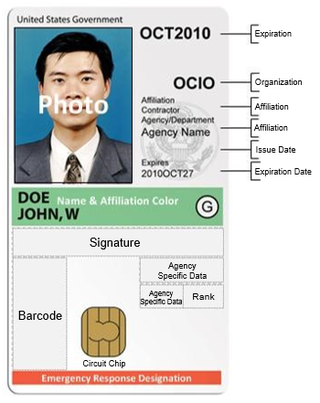In cryptography, a block cipher is a deterministic algorithm operating on fixed-length groups of bits, called blocks. Block ciphers are specified elementary components in the design of many cryptographic protocols and are widely used to encrypt large amounts of data, including in data exchange protocols. A block cipher uses blocks as an unvarying transformation.
In cryptography, key size, key length, or key space refer to the number of bits in a key used by a cryptographic algorithm.
Elliptic-curve cryptography (ECC) is an approach to public-key cryptography based on the algebraic structure of elliptic curves over finite fields. ECC allows smaller keys compared to non-EC cryptography to provide equivalent security.
A pseudorandom number generator (PRNG), also known as a deterministic random bit generator (DRBG), is an algorithm for generating a sequence of numbers whose properties approximate the properties of sequences of random numbers. The PRNG-generated sequence is not truly random, because it is completely determined by an initial value, called the PRNG's seed. Although sequences that are closer to truly random can be generated using hardware random number generators, pseudorandom number generators are important in practice for their speed in number generation and their reproducibility.
In cryptography, Triple DES, officially the Triple Data Encryption Algorithm, is a symmetric-key block cipher, which applies the DES cipher algorithm three times to each data block. The Data Encryption Standard's (DES) 56-bit key is no longer considered adequate in the face of modern cryptanalytic techniques and supercomputing power. A CVE released in 2016, CVE-2016-2183 disclosed a major security vulnerability in DES and 3DES encryption algorithms. This CVE, combined with the inadequate key size of DES and 3DES, NIST has deprecated DES and 3DES for new applications in 2017, and for all applications by the end of 2023. It has been replaced with the more secure, more robust AES.
In cryptography, a block cipher mode of operation is an algorithm that uses a block cipher to provide information security such as confidentiality or authenticity. A block cipher by itself is only suitable for the secure cryptographic transformation of one fixed-length group of bits called a block. A mode of operation describes how to repeatedly apply a cipher's single-block operation to securely transform amounts of data larger than a block.

In computing, a hardware random number generator (HRNG) or true random number generator (TRNG) is a device that generates random numbers from a physical process, rather than by means of an algorithm. Such devices are often based on microscopic phenomena that generate low-level, statistically random "noise" signals, such as thermal noise, the photoelectric effect, involving a beam splitter, and other quantum phenomena. These stochastic processes are, in theory, completely unpredictable for as long as an equation governing such phenomena is unknown or uncomputable. This is in contrast to the paradigm of pseudo-random number generation commonly implemented in computer programs.
A cryptographically secure pseudorandom number generator (CSPRNG) or cryptographic pseudorandom number generator (CPRNG) is a pseudorandom number generator (PRNG) with properties that make it suitable for use in cryptography. It is also loosely known as a cryptographic random number generator (CRNG).
In cryptography, a key derivation function (KDF) is a cryptographic algorithm that derives one or more secret keys from a secret value such as a master key, a password, or a passphrase using a pseudorandom function. KDFs can be used to stretch keys into longer keys or to obtain keys of a required format, such as converting a group element that is the result of a Diffie–Hellman key exchange into a symmetric key for use with AES. Keyed cryptographic hash functions are popular examples of pseudorandom functions used for key derivation.
The security of cryptographic systems depends on some secret data that is known to authorized persons but unknown and unpredictable to others. To achieve this unpredictability, some randomization is typically employed. Modern cryptographic protocols often require frequent generation of random quantities. Cryptographic attacks that subvert or exploit weaknesses in this process are known as random number generator attacks.
A random password generator is software program or hardware device that takes input from a random or pseudo-random number generator and automatically generates a password. Random passwords can be generated manually, using simple sources of randomness such as dice or coins, or they can be generated using a computer.

Random number generation is a process by which, often by means of a random number generator (RNG), a sequence of numbers or symbols that cannot be reasonably predicted better than by random chance is generated. This means that the particular outcome sequence will contain some patterns detectable in hindsight but unpredictable to foresight. True random number generators can be hardware random-number generators (HRNGS) that generate random numbers, wherein each generation is a function of the current value of a physical environment's attribute that is constantly changing in a manner that is practically impossible to model. This would be in contrast to so-called "random number generations" done by pseudorandom number generators (PRNGs) that generate numbers that only look random but are in fact pre-determined—these generations can be reproduced simply by knowing the state of the PRNG.

FIPS 201 is a United States federal government standard that specifies Personal Identity Verification (PIV) requirements for Federal employees and contractors.
In cryptography, key stretching techniques are used to make a possibly weak key, typically a password or passphrase, more secure against a brute-force attack by increasing the resources it takes to test each possible key. Passwords or passphrases created by humans are often short or predictable enough to allow password cracking, and key stretching is intended to make such attacks more difficult by complicating a basic step of trying a single password candidate. Key stretching also improves security in some real-world applications where the key length has been constrained, by mimicking a longer key length from the perspective of a brute-force attacker.
Dual_EC_DRBG is an algorithm that was presented as a cryptographically secure pseudorandom number generator (CSPRNG) using methods in elliptic curve cryptography. Despite wide public criticism, including the public identification of a backdoor, it was for seven years one of four CSPRNGs standardized in NIST SP 800-90A as originally published circa June 2006, until it was withdrawn in 2014.
A randomness extractor, often simply called an "extractor", is a function, which being applied to output from a weakly random entropy source, together with a short, uniformly random seed, generates a highly random output that appears independent from the source and uniformly distributed. Examples of weakly random sources include radioactive decay or thermal noise; the only restriction on possible sources is that there is no way they can be fully controlled, calculated or predicted, and that a lower bound on their entropy rate can be established. For a given source, a randomness extractor can even be considered to be a true random number generator (TRNG); but there is no single extractor that has been proven to produce truly random output from any type of weakly random source.
RDRAND is an instruction for returning random numbers from an Intel on-chip hardware random number generator which has been seeded by an on-chip entropy source. Intel introduced the feature around 2012, and AMD added support for the instruction in June 2015.
HKDF is a simple key derivation function (KDF) based on HMAC message authentication code. It was initially proposed by its authors as a building block in various protocols and applications, as well as to discourage the proliferation of multiple KDF mechanisms. The main approach HKDF follows is the "extract-then-expand" paradigm, where the KDF logically consists of two modules: the first stage takes the input keying material and "extracts" from it a fixed-length pseudorandom key, and then the second stage "expands" this key into several additional pseudorandom keys.
NIST SP 800-90A is a publication by the National Institute of Standards and Technology with the title Recommendation for Random Number Generation Using Deterministic Random Bit Generators. The publication contains the specification for three allegedly cryptographically secure pseudorandom number generators for use in cryptography: Hash DRBG, HMAC DRBG, and CTR DRBG.
A mask generation function (MGF) is a cryptographic primitive similar to a cryptographic hash function except that while a hash function's output has a fixed size, a MGF supports output of a variable length. In this respect, a MGF can be viewed as a single-use XOR function: it can accept input of any length and process it to produce output of any length. Mask generation functions are completely deterministic: for any given input and any desired output length the output is always the same.


